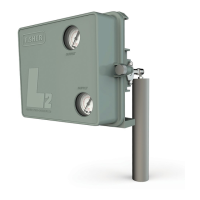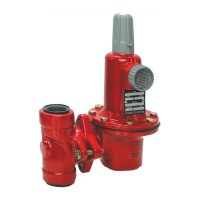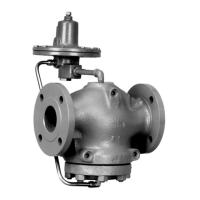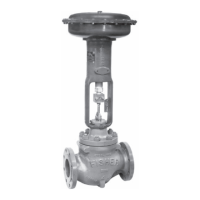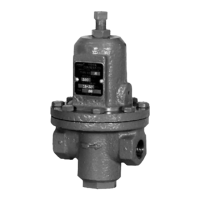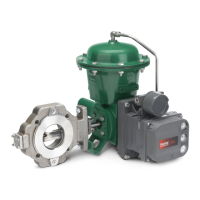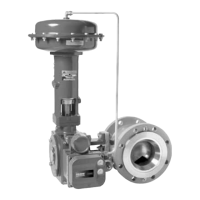Type 99
9
the extra high-pressure pilot of 1000 psig / 69.0 bar
maximum inlet pressure in case the Type 1301F supply
regulator fails open, this protection is insufcient if the
main valve body fails open. Regulator operation within
ratings does not preclude the possibility of damage from
external sources or from debris in the lines. A regulator
should be inspected for damage periodically and after
any overpressure condition.
!
WARNING
The 1000 psig / 69.0 bar maximum
inlet regulator must not be used on
hazardous gas service unless the
Type H110 relief valve can be vented
into a safe area. If vented gas can
accumulate and become a hazard in
enclosed conditions such as in a pit,
underground or indoors, the relief valve
must be repiped to carry the gas to a
safe location.
A repiped vent line or stack must be
located to avoid venting gas near
buildings, air intakes or any hazardous
location. The line or stack opening must
be protected against condensation,
freezing and clogging.
Startup
Key numbers are referenced in Figures 9 through 15
for a low or high-pressure pilot and in Figure 18 for an
extra high-pressure pilot.
1. Very slowly open the upstream block valve.
2. Slowly open the hand valve (if used) in the control
line. The unit will control downstream pressure
at the pilot control spring setting. If changes in
the pressure setting are necessary, follow the
procedure in the Adjustment section.
3. Slowly open the downstream block valve.
4. Slowly close the bypass valve, if any.
5. Check all connections for leaks.
Adjustment
With proper installation completed, perform the
adjustment procedure while using pressure gauges to
monitor pressure.
The only adjustment on the regulator is the reduced
pressure setting affected by the pilot control spring
(key 43, Figure 9, 12, 14 or 18). Remove the closing
cap assembly (key 46, Figure 9, 14 or 15) and turn
the adjusting screw (key 45, Figure 9, 14, 15 or 18).
Turning the adjusting screw clockwise into the spring
case increases the controlled or reduced pressure
setting. Turning the adjusting screw counterclockwise
decreases the reduced pressure setting. Always
replace the closing cap after making adjustments.
Shutdown
Installation arrangements may vary, but in any
installation, it is important to open and close valves
slowly and the outlet pressure be vented before
venting inlet pressure to prevent damage caused by
reverse pressurization of the regulator.
1. Isolate the regulator from the system. Close the
upstream block valve to the pilot and regulator inlet.
2. Close the downstream block valve to the pilot
sense connection and the regulator outlet.
3. Vent the downstream pressure by slowly opening
the vent valve to vent all pressures.
4. Vent inlet pressure slowly through the vent valve to
release any remaining pressure in the regulator.
Maintenance
Regulator parts are subject to normal wear and must be
inspected and replaced as necessary. The frequency
of inspection and replacement of parts depend on the
severity of service conditions or the requirements of
local, state and federal rules and regulations.
!
WARNING
Avoid personal injury or damage to
property from sudden release of pressure
or uncontrolled gas or other process uid.
Before starting to disassemble, isolate
the pilot or regulator from all pressure
and cautiously release trapped pressure
from the pilot or regulator. Use gauges to
monitor inlet, loading and outlet pressures
while releasing these pressures.

